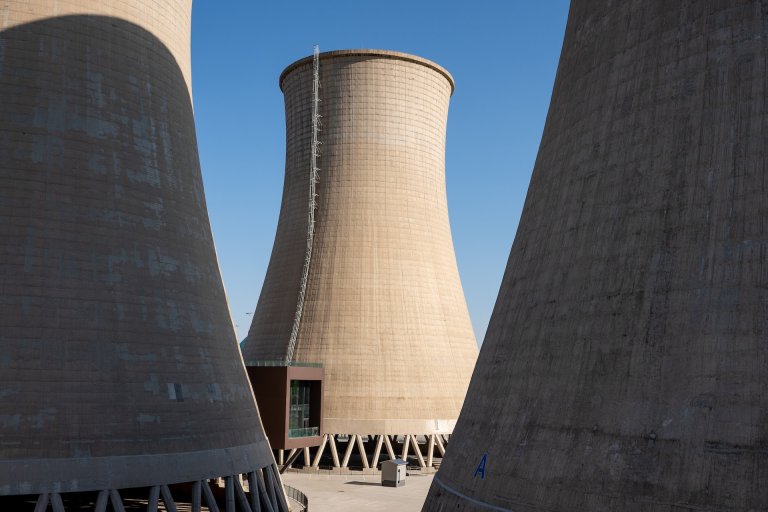- About
- Topics
- Picks
- Audio
- Story
- In-Depth
- Opinion
- News
- Donate
- Signup for our newsletterOur Editors' Best Picks.Send
Read, Debate: Engage.
Experts said at COP27 that it will be "very challenging" for China to achieve its green ambitions, despite a lauded power decarbonisation effort. What’s standing in its way?

China's industrial sector will face enormous challenges on the path to reach its 2050 net-zero goals, experts said at COP27. This is despite the fact that the East Asian nation is among the countries that rolled out the fastest renewable transitions in the world.
Beijing pledged to peak carbon emissions by 2030 and reach neutrality by 2060. By 2025, the country set a target to use non-fossil sources in one-fifth of its energy mix, and China plans to push that figure to 25 percent by 2030 and over 80 percent by 2060.
Nan Zhou, a data scientist at the Lawrence Berkeley National Laboratory, lauded the aggressive green policies China has implemented, but warned about a "very difficult" path ahead for the country as it tries to achieve its goals.
"[The goal] would mean carbon emissions being net zero by 2050 and greenhouse gases emissions being net zero by 2060," Zhou said at COP27.
According to her findings at China Energy Outlook 2022, even if China is able to implement all its proposed policies – including driving dirty industries to net zero - half of its carbon emissions in transportation will likely remain, and there will still be two gigatons of carbon left by 2060 in what she called a "deep mitigation scenario."
"The industry sector is a key challenge and will still be hard to abate," Zhou explained. "In all the industrial sub-sectors, the top three are the most energy consuming and emitting sectors: chemicals, iron steel and cement. Lots of emissions are from manufacturing, but also construction activities in China."
China’s current direction for such industries is clear: the steel industry, for instance, is targeted to peak carbon emissions by 2030, with steel plants employing carbon capture technology and using hydrogen or biomass to fuel production.
Notably, the country’s steel output has dropped. And while the demand for electric vehicles is expected to grow along with the rise in sales, the demand for property in China - which involves steel production - will remain steady in the future, experts told FairPlanet.
Zhou said that China’s power sector, on the other hand, is on the right track to decarbonise and transition to renewable sources. "The power sector might be one of the first to achieve net zero," she predicted. "It can decarbonise and quickly become fossil-free by 2045."
Currently, China is still heavily reliant on coal, which accounts for 56.1 percent of its energy mix, down from 68.5 percent in 2012. The share of renewables, including wind, solar, hydropower, biomass and nuclear power, had jumped from less than 10 percent in 2012 to 16.6 percent in 2021, with wind and solar growing fivefold during this period.
China’s strong solar PV manufacturing capacity partially pushed down the cost of solar energy generation, turning it into the lowest-cost option in most of the world, according to a report by the International Energy Agency (IEA). The country was responsible for nearly 40 percent of the solar PV generation growth in 2021.
"We are seeing some of the fastest progress globally to transition to wind and solar," said Dan Wetzel, head of tracking at IEA's sustainable transitions unit, at an event in COP27.
"China installs [such capacity] more than everyone else every year," he said. "Even if it keeps its historic speed, China can easily surpass its installation target by 2030, and probably in the next few years."
China is expected to continue focusing on building its domestic energy supply, Wetzel added. "Even in a scenario where Russia will be looking for other trading partners to provide its natural gas, it wouldn’t be able to be brought to China or the Asia Pacific market soon."
His comment corroborates the stance of Muyi Yang, Senior Electricity Policy Analyst - Asia at Ember. "In the power sector, a major structural shift has already taken place in the past decade, with an exceptional growth in wind, solar and hydro power," he told FairPlanet.
"The recent power crises have given additional immediacy for China to expedite the process of rebuilding its power system around clean energy. This would be essential for China to secure a carbon neutral electricity future while ensuring supply security."

But as promising as domestic energy growth forecasts for China might seem, its ongoing tensions with the US could hamper global solar energy efforts.
A Reuters report found that over a thousand shipments of solar energy components are piling at American ports since June this year after a new law banned Chinese solar products over slave labour claims.
But as Chinese President Xi Jinping and US President Joe Biden met in Bali at the G20 summit, climate talks and cooperation between the two have resumed.
Labour rights concerns aside, China’s energy transition path also drew criticism for approving and building 15 gigawatts of new coal-fired power capacity in the first half of 2021, as well as expanding its coal fleet.
Despite stopping roughly 15 overseas coal plants from being built following an announced ban in September 2021, a report from the Centre for Research on Energy and Clean Air found that 18 projects involving 19.2 gigawatts of coal power capacity could still go ahead under its Belt and Road Initiative (BRI), as many projects had secured funding before the ban came into effect.
China’s climate envoy at COP27, Xie Zhenhua, defended China’s coal capacity growth, citing the need to maintain the stability of its electricity supply.
Using CCUS technology and ramping down the use of coal could be potential solutions to accelerating China’s energy transition, Wetzel suggested.
For heavy emitting industries like steel and iron, he said, "Dematerialisation is a very important lever in China, and it’s essential for the next 10 years. China’s NDCs [national determined targets] are fully met under the current policy because they are really accelerating the pace of things."
"The major lever is [dematerialisation]," Wetzel added. "This is within reach because Xi pointed out that China wants switch to a higher quality economic growth and move this into the services sector."
This article was published with the support of Climate Tracker’s Climate Justice Journalism Fellowship.
Image by Max Zhang.
